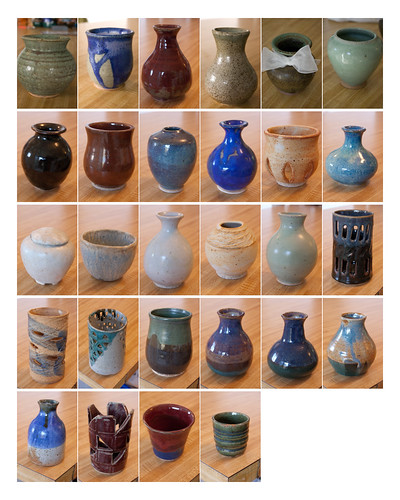
This mug was designed by Steven Frank and
printed by Zazzle. The top part of
the design was much darker six months ago. Zazzle’s process appears to
involve shrink-wrapping a layer of plastic over the mug and then
printing on that; you can’t see it in the photo, but the plastic has
started to peel off near the top of the handle. I have another such mug,
printed using a different process in 2003 for the Stanford Film Society’s
Film Our Way
festival; it didn’t fade nearly as fast, and there
wasn’t any plastic to peel off, but after seven years of use the design
is almost gone.
The problem with these mugs is, the design is printed on top of the
glaze. Truly permanent decorations on ceramic are either done with the
glaze itself, or are inked directly on the unglazed piece and then
covered by transparent glaze. Either way, the decoration happens
before the glaze firing. Unfortunately, glaze kilns are
typically designed to process hundreds of pieces per batch, and take
several days to go through a complete cycle. That’s not practical for a
print-on-demand outfit.
I think you could design a much smaller kiln, with space for just a
few mugs, though. It’d be lined with fiberglass instead of firebrick, to
reduce the thermal mass; since there’s no need for a reduction phase
with clear glazes, it could use electric heat. It’s not possible to do a
stoneware firing in less than about 24 hours start to finish, because
the clay will crack if you heat or cool it too fast (this is why raku-glaze pieces are
often fragile) but there would be no need for several days’ worth of
cooling time as is typical for large batch kilns.


